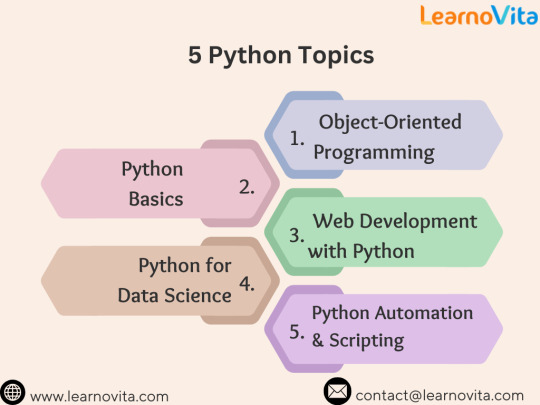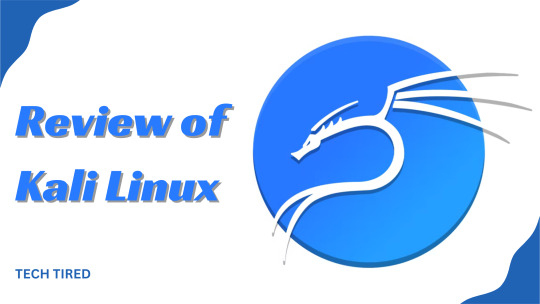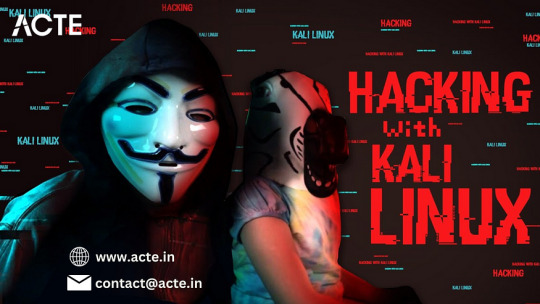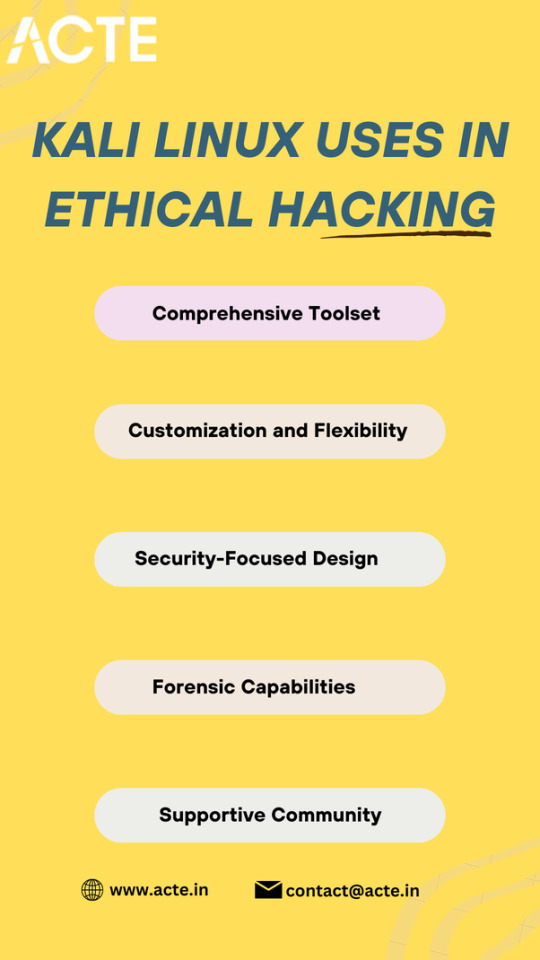#Ethical Hacking tutorial for beginners
Explore tagged Tumblr posts
Text
Learn the art of web scraping with Python! This beginner-friendly guide covers the basics, ethics, legal considerations, and a step-by-step tutorial with code examples. Uncover valuable data and become a digital explorer.
#API#BeautifulSoup#Beginner’s Guide#Data Extraction#Data Science#Ethical Hacking#Pandas#Python#Python Programming#Requests#Tutorial#Web Crawler#web scraping
1 note
·
View note
Text
Indispensable Tools For Successful Farming🥰
From tractors and irrigation systems to fertilizers and spreaders, there is a wide range of tools available for successful farming. Each of these implements offer unique benefits for farmers and provide an efficient way to increase crop yields(more)

#ethical hacking tools#english lessons advanced speaking#learn english speaking in hindi#english to hindi vocabulary#learn english speaking#c#fundamentals for absolute beginners#online english speaking classes#english lesson#ending#english speaking#speaking english#increase english vocabulary#biotechnology principles and processes#succulent#murli sharma hindi dubbed movies#cricut design space tutorials for beginners#succulents
1 note
·
View note
Text
The Complete Manual for Understanding Ethical Hacking
In order to evaluate an organization's defenses, ethical hacking—also referred to as penetration testing or white-hat hacking—involves breaking into computers and other devices lawfully. You've come to the correct spot if you're interested in finding out more about ethical hacking. Here's a quick start tutorial to get you going.

1. "Getting Started with the Basics"
Networking and computer science principles must be thoroughly understood before getting into ethical hacking. Here are some crucial aspects to pay attention to: Operating Systems: Acquire knowledge of several operating systems, with a focus on Linux and Windows. Learning Linux is essential because a lot of hacking tools are made to run on it. Networking: It's essential to comprehend how networks operate. Find out more about
protocols include HTTP, HTTPS, DNS, TCP/IP, and others. Understanding data flow across networks facilitates vulnerability detection. Programming: It's crucial to know at least a little bit of a language like Python, JavaScript, or C++. Writing scripts and deciphering the code of pre-existing tools are made possible by having programming expertise.
2. Making Use of Internet Resources To learn more about ethical hacking, there are a ton of internet resources available. Here are a few of the top ones: Online Education: Online learning environments such as Pluralsight, Coursera, and Udemy provide in-depth instruction in ethical hacking. "Penetration Testing and Ethical Hacking" on Pluralsight and "The Complete Ethical Hacking Course: Beginner to Advanced" on Udemy are two recommended courses. Channels on YouTube: HackerSploit, The Cyber Mentor, and LiveOverflow are just a few of the channels that offer helpful tutorials and walkthroughs on a variety of hacking tactics.
3. Exercising and Acquiring Knowledge The secret to being a skilled ethical hacker is experience. Here are some strategies to obtain practical experience:
Capture the Flag (CTF) Tournaments: Applying your abilities in CTF tournaments is a great idea. CTF challenges are available on websites like CTFtime and OverTheWire, with difficulty levels ranging from novice to expert. Virtual Labs: It is essential to set up your virtual lab environment. You can construct isolated environments to practice hacking without worrying about the law thanks to programs like VMware and VirtualBox. Bug Bounty Programs: Websites such as HackerOne and Bugcrowd link corporations seeking to find and address security holes in their systems with ethical hackers. Engaging in these initiatives can yield practical experience and financial benefits.

Dedication and ongoing education are necessary to learn ethical hacking. You can become a skilled ethical hacker by learning the fundamentals, using internet resources, and acquiring real-world experience. Always remember to hack wisely and ethically. Cheers to your hacking! I appreciate your precious time, and I hope you have an amazing day.
9 notes
·
View notes
Text
👋 Introduction:
Hey everyone! I’m Preethi, as i'm in my first year of information technology i'm doing additional course in cyber security as a curious mind and a beginner in the exciting world of cybersecurity. As someone who’s always been fascinated by how technology works (and how it can be broken—ethically, of course 😄), I decided to dive into ethical hacking and explore the world of digital defense.
This is my first blog post, and I’m super excited to take you along on this journey. Whether you're a beginner like me or just cyber-curious, I hope my posts will inspire and inform you!
🔍 Why Cybersecurity?
Cybersecurity is not just about coding or fixing viruses—it's about protecting people. It’s like being a digital superhero, and the idea of stopping hackers from causing harm really clicked with me.
Also, let’s be honest… learning how hackers think is so cool. 😎
💻 Why Ethical Hacking?
One thing that drew me to ethical hacking specifically is the idea that hackers can be the “good guys” too. As an ethical hacker, you're actually hired to find vulnerabilities and patch them before malicious hackers can exploit them.
In a world where data is constantly at risk, ethical hackers are like digital detectives—stopping crimes before they happen.
🔓 What I Discovered in My First Click
It all started with a random click.
I was Googling something, just as I always do, when I noticed a new icon in the “Tools” section. Out of curiosity, I clicked it. And that simple action led me down a rabbit hole of new concepts, tools, and ideas.
I found myself reading about ethical hacking, DDoS attacks, and encryption algorithms. I realized cybersecurity was more than just tech jargon—it was about understanding how the digital world works and how to protect it. That one click sparked a fire, and I knew I had to learn more.
🛠️ First Tools I Came Across
Wireshark: This tool allowed me to capture network traffic and view the data packets passing through the network. It felt like a magic window into the digital world!
Nmap: A powerful network scanning tool. I learned how to scan for vulnerabilities in a network and assess its security posture. It was eye-opening to see how easily someone could breach a system if it's not properly secured.
💭 What’s Next for Me
Since that initial click, I’ve been diving deep into cybersecurity, learning everything from network security to cryptography. I’m currently doing an internship related to cybersecurity, where I’m getting hands-on experience and developing my skills.
I’ll be sharing everything I learn along the way. Whether it's tutorials on DDoS attacks or tips for securing personal data, I want to document my journey so you can join me in this exciting field.
🔐 Learning Cryptography and Encryption
One of my next steps is exploring cryptography. The idea that encryption can protect data in the digital world fascinates me. It’s the backbone of secure online transactions, messaging apps, and pretty much every secure login system we use today.
💬 Advice to Other Curious Clickers
If you’ve ever clicked something just because it looked interesting—good. That curiosity is your superpower. 💥
I had no idea one tiny tap on an icon would lead me into the world of cybersecurity, but here I am—exploring, learning, and loving it. So don’t ignore those little sparks. Whether it’s a weird-looking tool, a techy term you don’t understand, or a random blog post... click it. Explore it. Question it.
You don’t need to be an expert to start—you just need to be curious.
So to all the curious clickers out there: Keep clicking. Keep learning. Who knows? You might just discover your passion—just like I did. 💫
✨ Conclusion:
This is only the beginning of my journey, and I’m excited to see where my clicks take me next. I’ll keep exploring, experimenting, and sharing what I learn with you all. If you’re new to cybersecurity—or just curious—come along for the ride. Let’s discover this digital world together!
1 note
·
View note
Text
Python: The Silent Power Behind the Digital Revolution
In a world obsessed with cutting-edge technology, there’s one language quietly running the show Python. It’s not flashy. It doesn’t try to be overly complicated. But that’s exactly why it’s everywhere, powering everything from the apps we use daily to groundbreaking advancements in artificial intelligence.
Simplicity Meets Power
Some programming languages feel like cryptic puzzles, filled with symbols and jargon that scare off newcomers. Python is different. It’s designed to be readable, intuitive, and beginner-friendly, making it an ideal choice for both new learners and seasoned developers. Yet, beneath its simplicity lies an incredible level of power, making it a favorite among industry professionals and hobbyists alike. Its clean syntax ensures that developers can write code faster and more efficiently, reducing development time and increasing productivity.
Enrolling in a trusted Python Online Course equips individuals with the vital skills and expertise needed to succeed in this fast-paced and ever-changing field.

From Websites to AI—Python Does It All
Python isn’t just another coding language; it’s a universal tool shaping multiple industries. Whether you're a web developer, data scientist, or software engineer, Python provides the tools and flexibility needed to build innovative solutions.
Web Development: Python is the backbone of many major websites, helping developers build powerful platforms with frameworks like Django and Flask. These frameworks allow for quick development, robust security, and scalable applications.
Data Science & Analytics: Python simplifies analysis, making it easier to process massive amounts of information. With libraries like Pandas, NumPy, and Matplotlib, professionals can visualize trends, analyze big data, and make data-driven decisions.
Machine Learning & Artificial Intelligence: AI relies on Python to develop smarter systems, from facial recognition and chatbots to predictive analytics and self-driving cars. Libraries like TensorFlow, PyTorch, and Scikit-learn make machine learning accessible and powerful.
Cybersecurity & Ethical Hacking: Even cybersecurity experts turn to Python for automation, penetration testing, and detecting security threats. With tools like Scapy and PyCrypto, professionals can enhance security measures and combat cyber risks.
Automation & Scripting: Python is widely used for automating repetitive tasks, such as web scraping, file management, and system monitoring. Whether you're a business professional or an IT administrator, Python can help streamline workflows.
A Global Community That Never Stops Growing
Beyond its technical capabilities, one of Python’s biggest strengths is its community. Millions of developers worldwide contribute to open-source projects, build new libraries, and provide support through forums, tutorials, and online courses. Learning Python means gaining access to a vast ecosystem of knowledge and collaboration, making it easier than ever to solve problems and develop new ideas. Whether you’re troubleshooting an issue on Stack Overflow, taking an online course on Coursera, or contributing to an open-source project on GitHub, Python’s community is always there to help.
Python in Education: A Perfect Language for Beginners
Python has become the preferred language for programming education due to its simple syntax and real-world applications. Universities, schools, and coding boot camps worldwide use Python to teach programming concepts, making it the first step for many aspiring developers. It’s also widely used in research and academia for scientific computing, simulations, and artificial intelligence studies. With the Best Online Training & Placement Programs, you’ll master the skills to detect phishing emails, protect your personal data like a pro, and stay ahead of evolving cyber threats.

A Language Built for the Future
Technology is evolving at an unprecedented pace, and Python is evolving with it. Startups and tech giants alike are integrating Python into everything from blockchain to automation to quantum computing. With the rise of cloud computing and DevOps, Python plays a crucial role in managing infrastructure, automating deployments, and handling serverless computing.
Additionally, the demand for Python developers continues to grow, making it one of the highest-paying programming languages in the job market. Companies like Google, Netflix, Facebook, and NASA use Python to build and maintain their innovative technologies, proving that Python isn’t just a language—it’s a driving force behind the modern digital world.
Why You Should Learn Python Today
Whether you’re looking to start a new career, automate tasks, build web applications, dive into AI and data science, or contribute to open-source projects, Python opens the door to endless possibilities. Its versatility, ease of learning, and strong community support make it the perfect programming language for both beginners and experienced developers.
0 notes
Text
Python: The Versatile and Powerful Programming Language
Introduction
Python is one of the most popular programming languages in the world. Known for its simplicity, readability, and versatility, it has gained widespread adoption across various industries. From web development and data science to artificial intelligence and automation, Python has proven to be a language that empowers developers and businesses alike.
In this blog post, we will explore the origins of Python, its key features, popular frameworks and libraries, use cases, and future trends.
History of Python

Python was created by Guido van Rossum in the late 1980s and officially released in 1991. Van Rossum, a Dutch programmer, developed Python as a successor to the ABC programming language. His goal was to create a language that emphasized code readability and efficiency.
Python has undergone several major updates:
Python 1.0 (1991): The first official release with core features like exception handling and dynamic typing.
Python 2.x (2000): Introduced list comprehensions and garbage collection.
Python 3.x (2008 — Present): A major overhaul that improved Unicode handling, print statements, and object-oriented programming.
Python 2 was officially deprecated in 2020, and all modern developments focus on Python 3.
Key Features of Python

Python’s popularity stems from its numerous advantages, including:
1. Easy to Learn and Read
Python’s syntax is clear and concise, making it an excellent choice for beginners. Its use of indentation enforces clean code structure.
2. High-Level Language
As a high-level programming language, Python handles complex programming tasks like memory management automatically.
3. Interpreted Language
Python does not require compilation, allowing developers to run code directly and get instant feedback.
4. Dynamically Typed
Variable types are determined at runtime, reducing the need for explicit declarations.
5. Extensive Standard Library
Python comes with a rich set of built-in libraries that simplify tasks such as file handling, networking, and mathematical computations.
6. Cross-Platform Compatibility
Python runs seamlessly on Windows, macOS, and Linux, making it a truly cross-platform language.
7. Object-Oriented and Functional Programming
Python supports multiple paradigms, allowing developers to write both object-oriented and functional code.
8. Strong Community Support
With an active global community, Python offers extensive documentation, tutorials, and third-party libraries.
Popular Python Frameworks and Libraries
Python’s power comes from its vast ecosystem of frameworks and libraries. Here are some of the most widely used ones:
Web Development

Django: A high-level web framework for building secure and scalable web applications.
Flask: A lightweight and flexible framework ideal for microservices and RESTful APIs.
FastAPI: Designed for high-performance API development.
Data Science & Machine Learning
Pandas: Used for data manipulation and analysis.
NumPy: Provides support for large, multi-dimensional arrays and matrices.
Scikit-learn: A machine learning library for data mining and predictive analysis.
TensorFlow & PyTorch: Popular frameworks for deep learning and neural networks.
Automation & Scripting
Selenium: Automates web browsing tasks.
BeautifulSoup: Scrapes data from websites.
PyAutoGUI: Controls the keyboard and mouse programmatically.
Cybersecurity & Ethical Hacking
Scapy: Used for packet manipulation and network scanning.
Requests: Handles HTTP requests efficiently.
PyCrypto: Provides cryptographic functions.
Game Development
Pygame: A library for developing simple 2D games.
Godot Engine (GDScript with Python-like syntax): A popular game development framework.
Finance & FinTech
Quantlib: Used for financial analytics and modeling.
Zipline: A backtesting framework for trading strategies.
TA-Lib: Provides tools for technical analysis of stock data.
Use Cases of Python

Python is widely used in various domains due to its versatility. Here are some key areas where Python plays a significant role:
1. Web Development
Python is used to build websites and web applications with frameworks like Django, Flask, and FastAPI.
2. Data Science & Analytics
Python is the primary language for data scientists, thanks to libraries like Pandas, NumPy, and Matplotlib.
3. Machine Learning & AI
With TensorFlow, PyTorch, and Scikit-learn, Python enables AI-driven applications such as facial recognition, natural language processing, and predictive analytics.
4. Cybersecurity & Ethical Hacking
Python is commonly used for penetration testing, network security, and malware analysis.
5. Game Development
Python’s simplicity makes it a great choice for prototyping and developing indie games.
6. Automation & Scripting
Python automates repetitive tasks like file management, data entry, and email processing.
7. Internet of Things (IoT)
Python is used in IoT applications for controlling smart devices and handling sensor data.
8. Finance & FinTech
Python is extensively used for stock market analysis, trading algorithms, and risk management.
Click here to see how it works
Future Trends in Python

Python continues to evolve with emerging technologies. Some exciting trends include:
1. AI and Machine Learning Dominance
Python remains the leading language for AI and machine learning applications, with ongoing improvements in TensorFlow and PyTorch.
2. Growth of WebAssembly (WASM) with Python
Python is expected to play a role in WebAssembly, making web applications faster and more efficient.
3. Python in Quantum Computing
Libraries like Qiskit and Cirq are driving Python’s presence in quantum computing research.
4. Enhanced Performance with PyPy
PyPy, an alternative Python implementation, is improving execution speed and memory efficiency.
5. Increased Use in Cybersecurity
As cybersecurity threats rise, Python’s role in ethical hacking and security analysis will expand further.
6. Edge Computing & IoT Expansion
Python’s adoption in IoT and edge computing will increase, supporting smart cities and automation.
7. Python for Blockchain Development
Python is being used to build blockchain applications and smart contracts.
0 notes
Text
Cyber Security Courses in UAE – Upgrade Your Digital Defense Skills
Cyber threats are developing at a very fast pace, and cybersecurity has become an essential skill for both individuals and organizations. If you are seeking the top Cyber Security Courses in UAE, Smartzett Academy provides complete training programs to prepare you with the skills required to fight cyber threats successfully. Smartzett Academy offers career-oriented courses encompassing core areas of cybersecurity such as ethical hacking, network security, cloud security, and digital forensics. These courses are designed by professionals and abide by international standards of security so that the trainees can receive practical and conceptual knowledge. The Cyber Security Courses in UAE offered by the academy are designed for beginners and professionals wishing to advance their careers in the cybersecurity field. Whether you want to become a cybersecurity analyst, an ethical hacker, or security consultant, these courses provide hands-on training, case studies, and certification that boost your career growth. With the mounting need for UAE cyber security professionals, joining a trusted academy such as Smartzett Academy keeps you a step ahead. Their adaptable study modules, tutorial sessions by specialists, and experiential process make them one of the desired institutions for anyone looking to join the cybersecurity career path. Start your journey towards a secure digital world with Cyber Security Courses in UAE at Smartzett Academy. Develop your skills, gain internationally accredited certifications, and establish a flourishing career in cybersecurity.
0 notes
Text
Mastering Python 3: A Step-by-Step Guide
Python 3 is a powerful, versatile, and beginner-friendly programming language used in various fields, including web development, data science, automation, and artificial intelligence. Whether you are a complete beginner or looking to enhance your skills, following a structured learning approach will help you master Python efficiently.
Considering the kind support of Python Course in Chennai Whatever your level of experience or reason for switching from another programming language, learning Python gets much more fun.

1. Getting Started with Python Basics
Before diving into complex topics, it’s essential to understand the fundamentals of Python. Learn about Python syntax, variables, and data types such as strings, integers, lists, tuples, and dictionaries. Master control structures like if-else statements, loops (for and while), and functions to write reusable and efficient code.
2. Writing and Running Your First Programs
Hands-on practice is key to mastering Python. Start by writing simple programs such as a calculator, a to-do list, or a number guessing game. Use interactive coding platforms like Codecademy, Replit, or Jupyter Notebook to test and debug your code easily.
3. Understanding Object-Oriented Programming (OOP)
Object-Oriented Programming is essential for developing scalable applications. Learn how to create and use classes and objects. Understand key OOP principles like inheritance, encapsulation, polymorphism, and abstraction. Try building a small project using OOP concepts, such as a basic inventory system or a contact management application.
4. Diving into Intermediate Python Concepts
Once you’re comfortable with the basics, explore more advanced topics, including:
File Handling: Reading and writing files in Python.
Error Handling: Using try-except blocks to handle exceptions.
Regular Expressions: Searching and manipulating text data efficiently.
Modules and Packages: Organizing code into reusable components.
5. Working with Databases and APIs
Python is widely used for data management. Learn how to interact with:
SQL Databases like MySQL and SQLite to store structured data.
NoSQL Databases like MongoDB for flexible data storage.
APIs using the requests library to fetch and integrate external data. With the aid of Best Online Training & Placement Programs, which offer comprehensive training and job placement support to anyone looking to develop their talents, it’s easier to learn this tool and advance your career.

6. Choosing a Specialization in Python
Depending on your career goals, Python offers multiple specializations:
Web Development – Learn Django or Flask for backend development.
Data Science & Machine Learning – Work with Pandas, NumPy, Scikit-learn, and TensorFlow.
Automation & Scripting – Use Selenium, PyAutoGUI, and OpenCV.
Cybersecurity & Ethical Hacking – Explore penetration testing tools with Python.
7. Building Real-World Python Projects
Applying Python to real-world projects enhances learning and problem-solving skills. Try building:
A web scraper using BeautifulSoup.
A chatbot with AI integration.
A data visualization dashboard using Matplotlib and Seaborn.
8. Contributing to Open Source and Networking
Join the Python community by contributing to open-source projects on GitHub. Engage in discussions on platforms like Stack Overflow, Reddit, and Discord. Collaborating with others helps you learn best practices and stay updated with the latest trends.
9. Preparing for Python Certifications and Job Interviews
If you aim to use Python professionally, consider earning certifications such as:
Google IT Automation with Python.
Microsoft Certified: Python Associate.
PCEP (Certified Entry-Level Python Programmer).
Prepare for job interviews by solving Python coding challenges on LeetCode, CodeWars, and HackerRank.
10. Staying Updated and Continuous Learning
Python evolves with new libraries and frameworks. Keep learning by following Python blogs, watching tutorials, and working on new projects. Experimenting with trending technologies like AI, blockchain, and cloud computing will keep your Python skills relevant and in demand.
By following this step-by-step guide, practicing regularly, and working on real-world projects, you can progress from a beginner to an expert in Python 3 and unlock a wide range of career opportunities.
0 notes
Text

The Evolution of Hacking: From Cyberpunk Fantasy to Real-World Reality
Hacking has been a part of internet culture for as long as there’s been an internet to hack. For some, it’s a rebellious act—tearing down the walls built by corporations or governments. For others, it’s an artform, a way of playing with systems, seeing how far you can push boundaries. But what does hacking really mean today? And why does it still capture our imagination?
Historically, hacking has been portrayed as a dark art. Think back to movies like The Matrix or Hackers—hackers as antiheroes, taking down the system from the inside. But while these portrayals are often exaggerated, they did reflect a truth: hacking represents a desire to reclaim power and control. In a world where tech companies and governments collect personal data and monitor our every move, hacking is one way to level the playing field.
In the real world, hacking has taken on many forms. There’s ethical hacking, where people are hired to test systems for vulnerabilities, and there’s black-hat hacking, which involves illegal activities. But even those who engage in illegal hacking often see themselves as part of a larger rebellion against control and surveillance.
It’s easy to romanticize hacking, to see it as this cool, underground world of rebellious acts and revolutionary potential. But the reality is more complex. Hacking today isn’t just about taking down the man; it’s about finding flaws, building something new, or even just learning how things work beneath the surface. It’s about pushing boundaries, challenging authority, and questioning the systems that run our world.
And perhaps that’s the real reason hacking still resonates with so many people. It’s not just a skill or a rebellion—it’s a form of empowerment. It’s the ability to break free from the constraints placed on us, even if only for a moment.
In a world where everything feels so rigid, so controlled, hacking is the ultimate act of freedom. It’s a reminder that the digital world is malleable, that we can create our own paths through it, and that the rules are often made to be broken.
#hacking#ethical hacking#wifi hacking#password hacking#hacking techniques#hacking tools#atm hacking#hacking guide#hacking skills#hacking device#israel hacking#hacking mindset#israeli hacking#hacking tutorial#wireless hacking#black hat hacking#whatsapp hacking#python for hacking#hacking windows 11#how to learn hacking#government hacking#wifi password hacking#beginner hacking guide#why russians are hacking#state sponsored hacking
6 notes
·
View notes
Text
How to Set Up Macchanger in Kali Linux: Step-by-Step Guide Part 1

Description ✨ In this tutorial, I’ll show you how to install, configure, and use Macchanger on Kali Linux 🐧 to spoof your MAC address 🔀 and enhance your privacy 🔒. Whether you're a beginner 🌱 or an experienced Linux user 💻, this video covers everything you need to know about setting up Macchanger and using it effectively ✅.
🔥 🔧 What You’ll Learn:🛠️ What is Macchanger and why you need it 📥 Installing Macchanger on Kali Linux ⚙️ Configuring automatic MAC address changes 🕵️ Practical usage examples for anonymity
💡 Stay anonymous 🕶️, secure your network 🌐, and improve your ethical hacking toolkit 🧰 with this essential Kali Linux guide.
0 notes
Text
hacker resources
https://www.exploit-db.com/
0 notes
Text
Mastering Ethical Hacking with OpenVAS Scanners: A Beginner's Guide
Introduction OpenVAS (Open Vulnerability Assessment System) is a popular open-source vulnerability scanner used for detecting and reporting security vulnerabilities in networks. Ethical hacking, also known as penetration testing, is the practice of simulating cyber attacks to test an organization’s defenses. In this tutorial, we will explore the basics of navigating OpenVAS scanners, a crucial…
0 notes
Text
How to Start Ethical Hacking: A Beginner's Guide
Ethical hacking is a thrilling field that combines technical skills with problem-solving and creativity. If you’re interested in protecting systems and networks from malicious attacks, starting a career in ethical hacking might be the right path for you. Here’s a step-by-step guide to help you get started. For individuals who want to work in the sector, a respectable Ethical Hacking Training in Pune can give them the skills and information they need to succeed in this fast-paced atmosphere.

1. Understand the Basics
Before diving into ethical hacking, you need a solid foundation in key areas:
Computer Networks: Learn about how networks work, including protocols, IP addressing, and network topologies. Understanding how data travels across networks is crucial for identifying vulnerabilities.
Operating Systems: Gain proficiency in multiple operating systems, particularly Windows, Linux, and macOS. Linux, especially, is a favorite among hackers for its flexibility and powerful tools.
Programming: Knowledge of programming languages like Python, C, Java, or JavaScript can be invaluable. Python is particularly popular in the cybersecurity field for its simplicity and power.
2. Learn Cybersecurity Fundamentals
Understanding cybersecurity basics is essential for ethical hacking:
Security Principles: Familiarize yourself with core security concepts such as confidentiality, integrity, and availability (CIA triad), along with encryption and access control mechanisms.
Common Threats and Vulnerabilities: Study different types of cyber threats, such as malware, phishing, and DDoS attacks, as well as common vulnerabilities like SQL injection and cross-site scripting (XSS).
3. Obtain Certifications
Certifications can validate your skills and knowledge, making you more attractive to employers:
Certified Ethical Hacker (CEH): This certification covers various hacking techniques and tools, providing a comprehensive overview of ethical hacking.
Offensive Security Certified Professional (OSCP): Known for its rigorous practical exam, the OSCP is highly respected in the industry.
CompTIA Security+: A good starting point for anyone new to cybersecurity, this certification covers essential security concepts.

4. Set Up a Home Lab
Practical experience is crucial in ethical hacking. Set up your own home lab to practice:
Virtual Machines: Use software like VirtualBox or VMware to create virtual environments for testing and experimentation.
Network Simulators: Tools like GNS3 or Cisco Packet Tracer can help you simulate network environments.
Hacking Tools: Familiarize yourself with popular tools such as Nmap, Wireshark, Metasploit, and Burp Suite.
5. Join Ethical Hacking Communities
Connecting with others in the field can provide support, resources, and opportunities:
Online Forums and Communities: Join forums like Hack The Box, Cybrary, and Reddit’s r/NetSec for discussions and advice.
Meetups and Conferences: Attend local meetups or cybersecurity conferences to network with professionals and stay updated on industry trends.
6. Practice with Capture the Flag (CTF) Challenges
CTF challenges are competitions that simulate real-world hacking scenarios:
Online Platforms: Some websites offer a variety of challenges ranging from beginner to advanced levels.
Competitions: Participate in CTF competitions to test your skills, learn new techniques, and gain recognition in the community. Enrolling in Ethical Hacking Online Training can enable individuals to unlock full potential and develop a deeper understanding of its complexities.
7. Stay Updated
Cybersecurity is a constantly evolving field. Staying updated with the latest trends, tools, and techniques is crucial:
Blogs and News Sites: Follow cybersecurity blogs like Krebs on Security, Dark Reading, and Threatpost.
Books and Courses: Continuously seek out new books, online courses, and tutorials to expand your knowledge.
8. Ethical and Legal Considerations
Always remember the ethical and legal implications of hacking:
Permission: Only hack systems you have explicit permission to test.
Code of Conduct: Adhere to ethical guidelines and best practices to ensure your work helps improve security without causing harm.
Conclusion
Starting a career in ethical hacking requires a combination of foundational knowledge, practical experience, and continuous learning. By following these steps, you can develop the skills needed to identify and mitigate security threats, contributing to a safer digital world. Whether you’re driven by curiosity, the desire to protect, or the thrill of problem-solving, ethical hacking offers a rewarding and impactful career path.
0 notes
Text
Review of Kali Linux: An In-Depth Look at Features, Usability, and Suitability

Kali Linux is a version of Linux designed for people who work in computer security, do penetration tests, or are "ethical hackers." Recently, Kali Linux has become very famous. This is mostly because of the TV show Mr. Robot, which made hacking cool again. Kali Linux is one of the few specifically designed for hackers, and the show's popularity has brought in new viewers. It was my goal to answer some common questions about Kali Linux when I chose to look into it. It is used how? Most significantly, too, is it appropriate for beginners? Thanks partly to the TV show Mr. Robot, which has brought hacking back into public view, Kali Linux has become somewhat well-known. This distribution is among the few that are especially targeted at hacking, and the show's popularity surely drew a flood of fresh users to Kali. As more people with limited Linux or computer security knowledge explore Kali Linux, it's important to grasp this system and whether it best fits a novice. What is Kali Linux? Kali Linux is a specialized, open-source operating system based on Debian, designed for advanced penetration testing, security auditing, and digital forensics. Developed by Offensive Security, it includes a comprehensive suite of pre-installed tools for testing network and software vulnerabilities. Unlike general-purpose operating systems, Kali focuses on security tasks, offering over 600 tools covering diverse aspects of information security, such as network analysis, password cracking, and wireless attacks. Its features cater to ethical hackers, security researchers, and professionals who require a reliable platform for identifying and fixing security flaws. Built with a user-friendly interface and extensive community support, Kali Linux is accessible even to those new to the field, providing documentation, tutorials, and forums for guidance. It can be run in various environments, including virtual machines, live USBs, and traditional installations, making it versatile for different use cases. Despite its powerful capabilities, it's essential to note that Kali Linux is intended for legitimate security practices and should be used responsibly, adhering to legal and ethical standards. How Is Kali Linux Different From Others? Kali Linux is meant to satisfy demands for security auditing and professional penetration testing. Kali Linux has several fundamental modifications introduced in response to these needs: Kali Linux consists of systemd hooks that deactivate network services by default. This guarantees that the distribution stays safe independent of the packages put in place. Bluetooth and other services are blocked by default to improve security. Kali Linux meets the particular needs of security professionals by using an upstream kernel modified for wireless injection. Kali Linux employs a small collection of upstream software sources to preserve system integrity using a minimum and trusted set of repositories. New users could be enticed to include more repositories in their sources. Hence, there is an excellent chance of compromising the security and stability of the Kali Linux system. Offensive Security makes Kali Linux a rewrite of their old digital forensics and penetration testing distribution, BackTrack, built on Debian. Kali is full of security tools made for computer and network security experts. Its official website calls it a "Penetration Testing and Ethical Hacking Linux Distribution. A Linux distribution is a set of core tools, applications, and default settings with the Linux kernel. You can install Kali's tools on other systems, but what makes Kali unique is that it comes with these tools already installed and set up for its use cases. This level of specialization makes some jobs easier and others harder, which makes it clear that Kali Linux is not meant to be used for everything. Getting Kali Linux and setting it up It was simple to download Kali Linux. I went to the official page to download and chose the amd64 file that worked with my Intel CPU. I saw a set of hexadecimal numbers on the page. These numbers were the SHA-256 fingerprint, which is essential for checking the image's integrity—this is a necessary step because Kali is focused on security. I put Kali Linux on a VirtualBox VM after checking the file. Based on Debian, the startup process was easy to follow and had good documentation. When I turned on Kali Linux with the standard settings, I saw a screen where I could log in. - You can easily download VMware Workstation Player for Windows. - Don't forget to download the latest VMware virtual image from the Kali site. - Now, launch the VMware Workstation Player in your system. - Click to open a Virtual Machine. - Select the .vmx file from the unzipped Kali image that you downloaded in Step 2. - In the next screen, click on Play Virtual Machine. - Wait a few seconds for the virtual machine to be loaded in the system, then log in using "kali" by entering username and password. First Impressions and the User Experience I found that "root" is the only user to be used by default when logged in. This choice fits Kali's goal since many pen-testing tools need super-user rights. However, this isn't great for everyday use, especially if you share your computer. Applications on a default Kali installation are mostly security-related, and there aren't many tools that aren't related to security. For example, there is no built-in email program, but Debian packages can be used to install one. The Perils of Working as Root On most Unix-like systems, users log in as "unprivileged users" and only as "root" to do administrative chores. But you're always rooting in Kali, so there are no permission checks. This means that you could change the system without trying to. You can make accounts without privileges, but you don't need to do this extra step on some systems. Kali's Silent Creation Kali's default settings decrease network presence by disabling several background services, improving security. For example, since Kali's restrictions stop services from running automatically across reboots, installing a web server on Kali calls for human initialization. Though it can impede usual use cases like web development, this approach guarantees Kali remains secure even in hostile situations. Challenges in Software Installation and Library Organization Kali does not promise that every Debian package will be accessible; hence, adding outside repositories runs the danger of compromising system stability. Following Kali's hard-bitten policies to preserve security integrity would be advisable. Ultimately, is Kali Linux suitable for you? If you skip to the end, Kali is not for you whether you have strong views or are brand-new to Linux. Think on standard distributions like Debian or Ubuntu and add tools as necessary. Should technical language baffle you, Kali is not appropriate for you either. Its learning curve is severe; user-friendly Linux Mint or Zorin OS variants are better-starting points if you follow along and experiment. Prepared to explore networking and computer science more deeply. I advise Kali to run on a virtual computer on another Debian-based distribution to practice without interfering with your regular activities. FAQs What is Kali Linux? Designed for digital forensics and penetration testing, A1: Kali Linux is a Debian-based Linux system. Offence Security develops and keeps it up to date. How are Kali Linux's intended users? Mostly meant for specialists in penetration testers, ethical hackers, and cybersecurity, Kali Linux is It is not advised for beginners unsure about Linux or cybersecurity or for general-purpose use. Is Kali Linux licensed for use? Kali Linux is licensed for usage legally. Designed for vulnerability testing and ethical hacking, this toolkit Still, the legality relies on your usage. Using it for unlawful and unethical unauthorized or malicious hacking operations is against the law. How might I confirm the integrity of the downloaded Kali Linux ISO image? Examining the SHA-256 checksum of the obtained ISO image will help you to confirm its integrity. To guarantee the image has not been altered, compare the checksum of the acquired file with the one supplied on the Kali Linux download page. Can I install Kali Linux next to my current operating system? A dual-boot configuration lets you install Kali Linux alongside your current operating system. Before trying this, though, having some knowledge of bootloads and partitioning is advised. Could Kali Linux be used ritualistically on a virtual machine? Using VirtualBox or VMware, Kali Linux is installable and operates on a virtual system. Using Kali Linux for testing and learning is a smart approach that does not compromise your main operating system. Read the full article
0 notes
Text
Kali Linux: Empowering Ethical Hackers and Penetration Testers
Ethical hacking and penetration testing are essential practices in today’s digital landscape, where securing systems and networks is of paramount importance. One operating system that has gained immense popularity among ethical hackers is Kali Linux.

This explores the reasons why Kali Linux is widely used in the world of ethical hacking and how it empowers professionals in this field.
Let’s explore exciting things you can do with hacking, explained in easy words from the best Ethical Hacking Training Institute in Bangalore.
Few Key Factors that Make Kali Linux the Go-To Choice for Ethical Hacking:
Comprehensive Toolset: Kali Linux comes pre-installed with a vast collection of specialized tools and software specifically designed for penetration testing, vulnerability assessment, and ethical hacking. These tools range from network scanners and password crackers to wireless hacking tools and exploit frameworks. The extensive toolset saves time and effort for ethical hackers, as they don’t need to individually install and configure each tool.
Ease of Use: Kali Linux is designed with a user-friendly interface and streamlined workflow, making it accessible to both beginners and experienced professionals. The graphical interface simplifies the process of accessing and utilizing the various tools. Additionally, Kali Linux provides a command-line interface for advanced users who prefer a more hands-on approach.
Customizability: Kali Linux allows users to customize and tailor the operating system according to their specific needs. Ethical hackers can modify the system, install additional tools, and tweak configurations to optimize their workflow. This flexibility enables individuals to create a personalized environment that suits their hacking methodologies and preferences.

Security-Focused: Kali Linux prioritizes security and privacy. The operating system incorporates robust security measures to protect sensitive information and ensure a secure environment for ethical hacking activities. It includes features such as full disk encryption, secure development practices, and regular updates to address vulnerabilities.
Community Support: Kali Linux benefits from a large and active community of ethical hackers, security professionals, and enthusiasts. The community provides extensive documentation, tutorials, forums, and online resources that aid in learning, troubleshooting, and sharing knowledge. This collaborative environment fosters continuous improvement and helps users stay up-to-date with the latest developments in the field.
Kali Linux has emerged as a powerful and popular operating system for ethical hacking and penetration testing due to its comprehensive toolset, customization options, security-focused design, forensic capabilities, and a vibrant community.
By leveraging Kali Linux, ethical hackers can optimize their workflow, enhance their capabilities, and conduct thorough security assessments. As the digital landscape continues to evolve, Kali Linux remains at the forefront of empowering professionals in the field of ethical hacking.
For individuals looking to accelerate their Ethical Hacking Course progress and gain comprehensive knowledge, consider enrolling in professional courses offered by ACTE Technologies Bangalore. ACTE Technologies is well-known for delivering top-tier training programs across various tech-related domains, including web design. Their courses come complete with valuable certifications and real-world exposure.
0 notes
Text
#ethicalhackingcourseindelhi#ethicalhackingcoursesindelhi#bestethicalhackinginstituteindelhi#ethicalhackinginstituteindelhi#jobbasedethiclhackingtrainingindelhi#ethicalhackingcourseinrohini#ethical hacking course#ethical hacking courses#ethical hacking institute#ethical hacking online institute#ethical hacking training#best ethical hacking#ethical hacking job#ethical hacking services#SoundCloud
0 notes